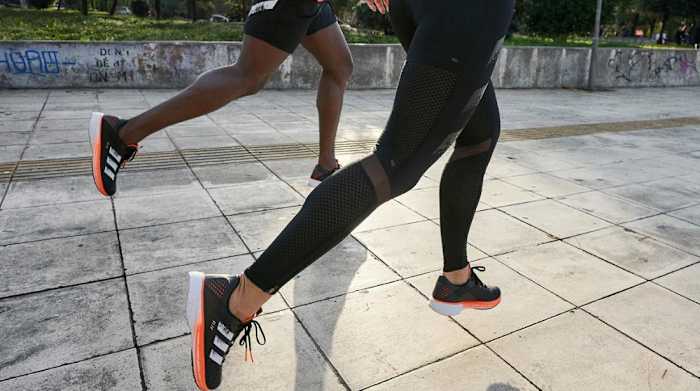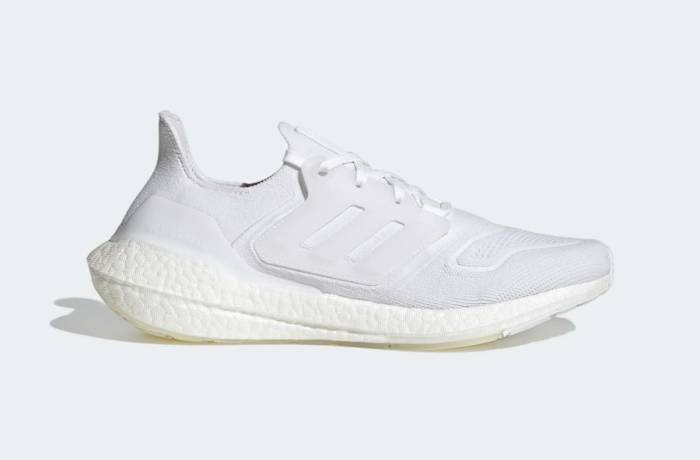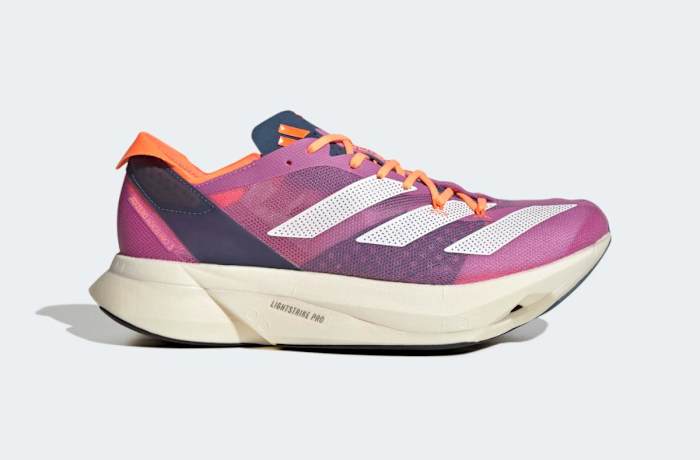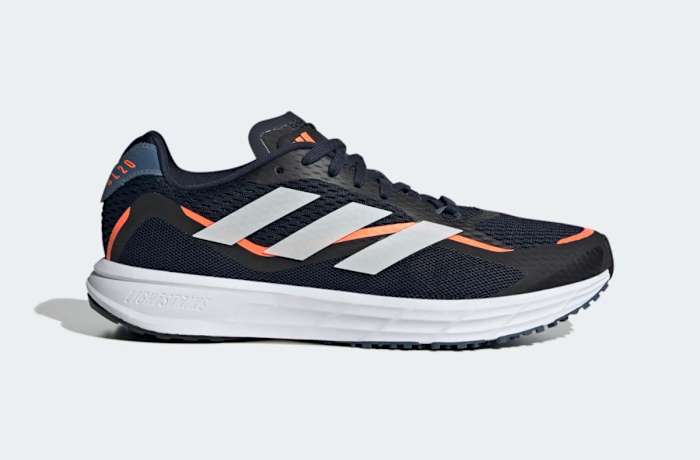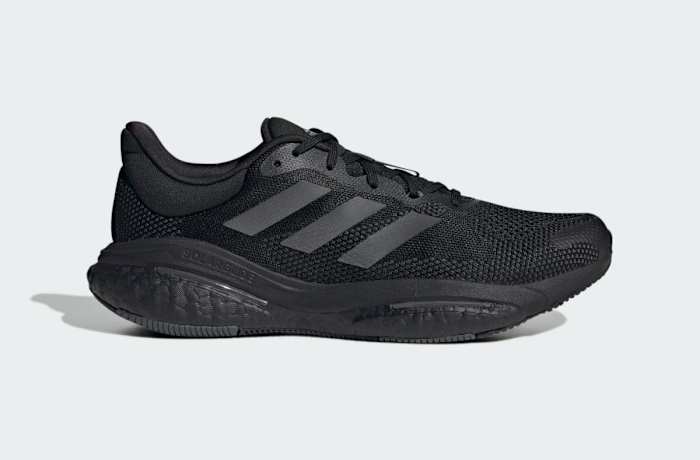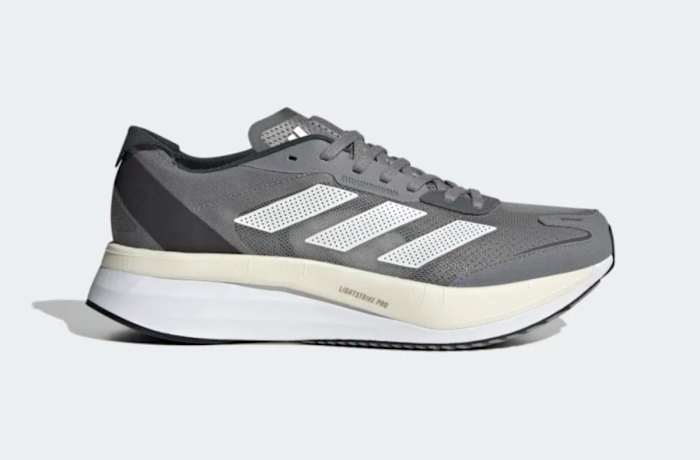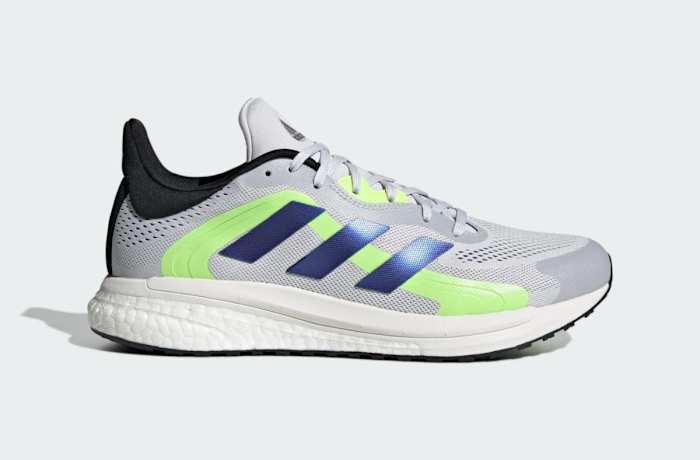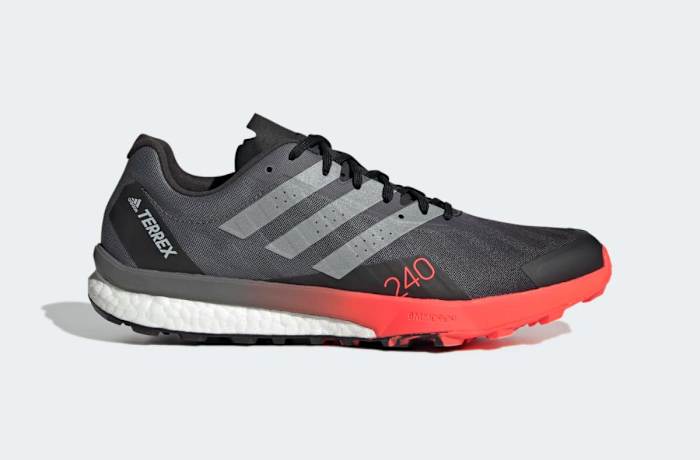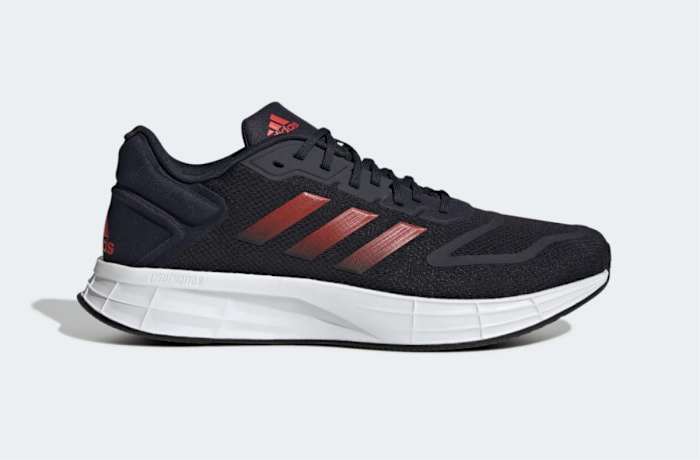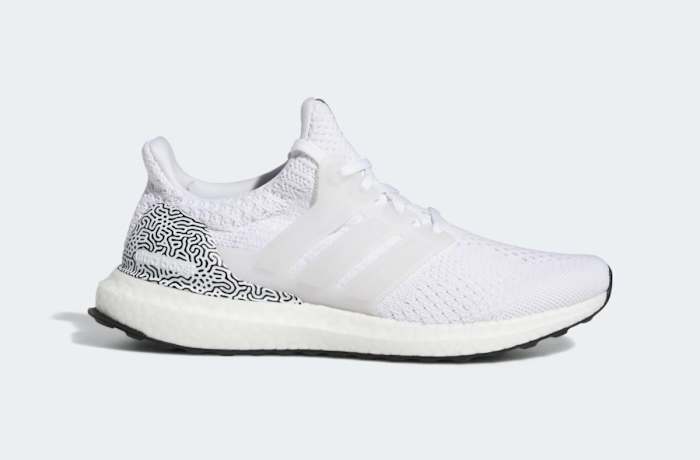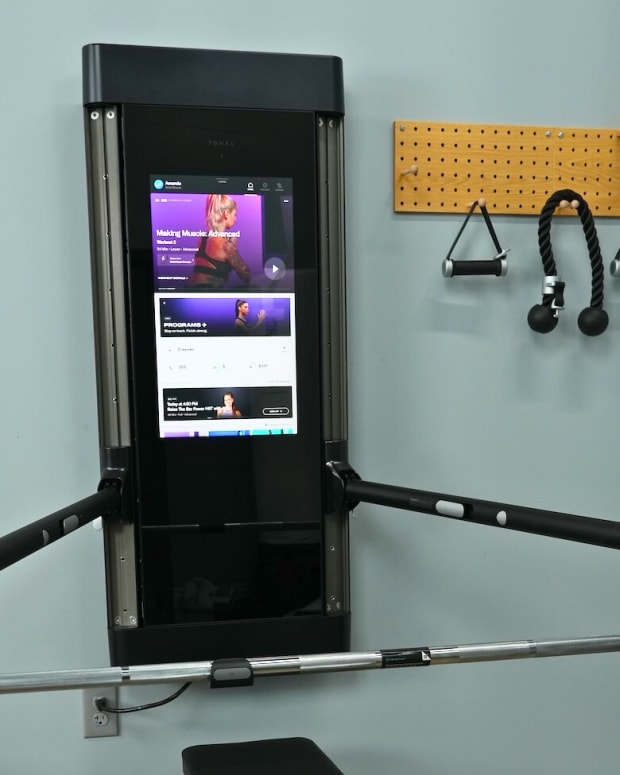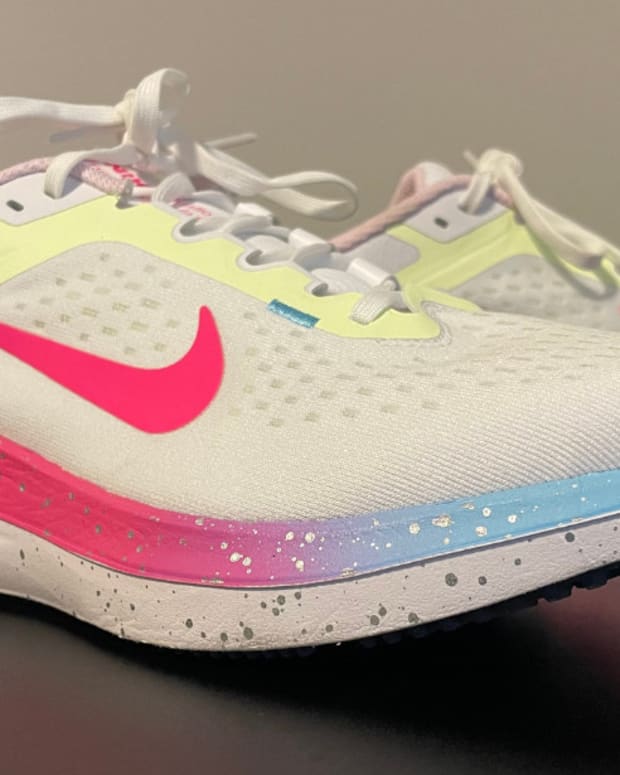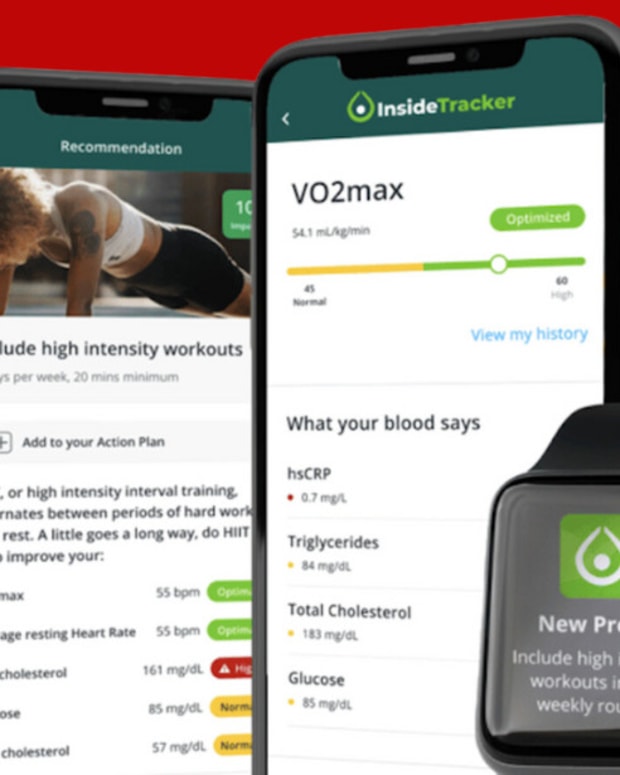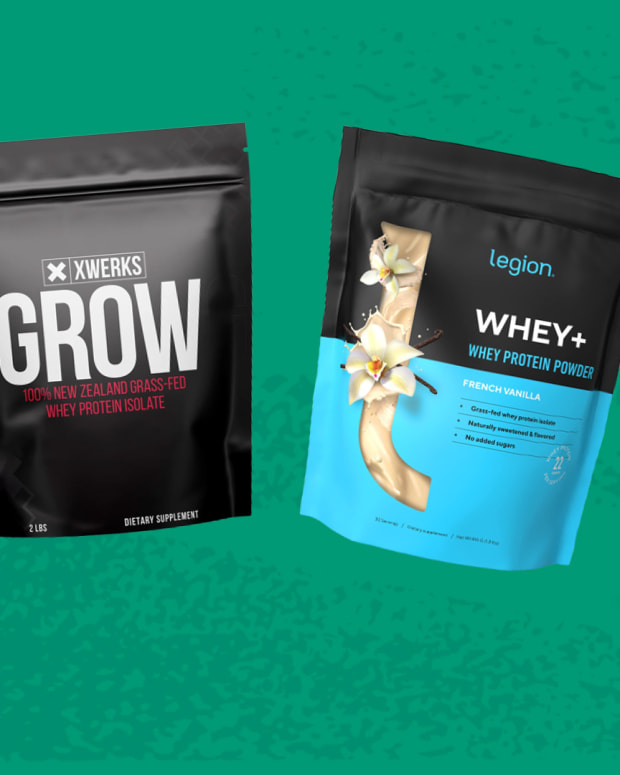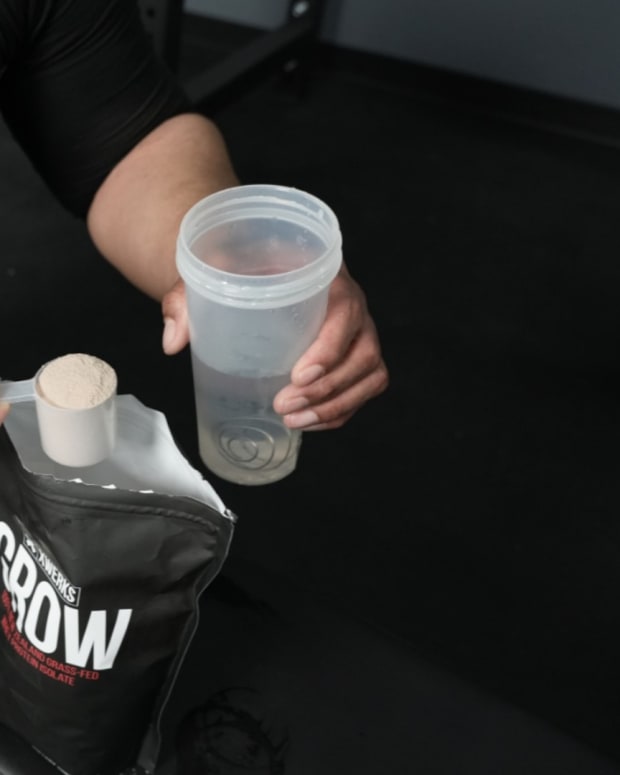The products featured in this article have been independently reviewed. When you buy something through the retail links on this page, we may earn commission at no cost to you, the reader. Sports Illustrated editorial staff are not involved in the creation of this content. Learn more here.
With innovative running technology, high-quality materials and modern designs, there are a hundred reasons why you might want to get a pair of adidas shoes for your running needs.
Of course, with such a lengthy lineup of quality adidas running shoes, finding ones that are suited to your needs can be quite challenging.
Luckily, we’re here to help. This article will explore the ins and outs of the top adidas running shoes on the market in 2024 and help you find the best pair for you.
Our Picks for the Best adidas Running Shoes of 2024:
- Best Overall: adidas Ultraboost 22
- Best for Racing: adidas Adizero Adios Pro 3
- Best for Training: adidas SL20.3
- Best Running Shoes for Men: adidas SolarGlide 5
- Best for Long-Distance Runs: adidas Adizero Boston 11
- Best for Flat Feet: adidas SolarGlide 4 ST
- Best for Trail Running: adidas Terrex Speed Ultra Trail Running Shoes
- Best Value: adidas Duramo 10
- Best Running Shoes for Women: adidas Ultraboost DNA
Best Overall: adidas Ultraboost 22
Key features:
- Weight: 11.7 ounces
- Drop: 10 millimeters
- Color options: 31 colors available
- Sizing: M5/W6-M14/W15
The adidas Ultraboost 22 running shoes are our top pick for the best adidas running shoes––with the brand’s famous thick Ultraboost foam, you get plush cushioning to keep your feet comfortable no matter where you’re running.
However, that thick foam does add some weight. If you’re looking for a super-fast shoe, you may need to opt for something a bit more lightweight. But we were pleasantly surprised by the fact that even with a 33.9 millimeter heel stack height, the shoe only comes out at 11.7 ounces. It’s a surprise that it isn’t heavier.
The stretchy knit material provides a snug fit while the upper structure holds tight around the foot. If you have wider feet, this design may feel a bit uncomfortable, especially in the narrow toe box. However, those with regular or narrow feet will enjoy its hold.
For a consistent and flexible shoe with tons of comfortable foam padding, the adidas Ultraboost 22 is an excellent choice.
Pros:
- True to size
- Soft and comfortable cushioning
- Excellent lockdown
Cons:
- Not the best for wide feet
- Not much energy return
Best for Racing: adidas Adizero Adios Pro 3
Key features:
- Weight: 8.1 ounces
- Drop: 6.5 millimeters
- Color options: Three colors available
- Sizing: M4/W5-M15/W11
If competition is your game, then the adidas Adizero 3 is a great shoe to keep you moving forward. It’s designed to be both comfortable and responsive, with an excellent blend of materials and technology to help you go the distance.
The Adizero 3’s upper is more breathable than the previous version, while the redesigned carbon energy rods support your feet to give you a more comfortable ride.
On long-distance marathon runs, the wide base adds stability and the additional cushioning in the forefoot keeps you comfortable.
The shoe was designed with a more aggressive toe-spring and dense midsole, making it stable and soft compared to the previous version. The design was meant to make for more propulsive and effortless transitions. However, some runners might not enjoy the 39.5 millimeter high-stack design of this shoe.
The price might be a lot for casual runners to swallow, but if you’re in the market for a pro shoe that can help you pivot, sprint and enjoy competitive runs with confidence, it might just be one of the best racing shoes around.
Pros:
- Increased cushioning in forefoot compared to first iteration
- Very stable
- True to size
Cons:
- Upper can feel a bit scratchy
- Large sole adds weight
Best for Training: adidas SL20.3
Key features:
- Weight: 8.7 ounces
- Drop: 8 millimeters
- Color options: Four colors available
- Sizing: M6.5-M13
The adidas SL20.3 shoe is one of the most versatile shoes in the adidas lineup, which is one of the reasons it works well for training. Many reviews describe the ride as snappy and responsive, allowing runners to move quicker and with more confidence on daily runs.
If you’re looking to tackle a 5k or 10k, this shoe is up to the challenge. With a surprisingly lightweight design and a price that won’t make you rethink your financial decisions, it’s a truly solid all-rounder. adidas made a few tweaks to the previous version, the SL20.2, to create this shoe, with a design that utilizes recycled materials to minimize material waste and a stretchier mesh upper for more breathability. That added ventilation makes it an excellent summer shoe, especially for those who suffer from sweaty feet.
Overall, this running shoe has a pretty simple design––you get sufficient cushioning and protection to keep you feeling good on mid-distance runs. With the lightweight construction, it works nicely for short sprints, too..
On the downside, if you’re looking for a shoe with ultra-plush cushioning, the SL20.3 isn’t it. We wouldn’t recommend this to anyone looking to take on long-distance marathon runs.
Pros:
- Lightweight and breathable materials
- Very stable grip on turns
- Great for all kinds of running conditions
Cons:
- Firm cushioning
- Narrow toe box may be uncomfortable for those with wide feet
Best Running Shoes for Men: SolarGlide 5
Key features:
- Weight: 11.8 ounces
- Drop: 10 millimeters
- Color options: Ten colors available
- Sizing: M6.5/W7.5-M15/M16
If you’re in the market for a daily runner, the SolarGlide 5 from adidas is a great choice. It offers plenty of cushioning to keep you comfortable and safe on high-mileage runs. Whether you’re just getting into running or you consider yourself an expert, you’ll appreciate the fit and feel.
The ride is very firm and stable, great for long-distance runs. However, with a simple design and breathable materials, the shoe works just as well for casual walking and gym training. The fifth iteration of the SolarGlide comes with a brand-new upper for more breathability and a new Linear Energy Push sole system designed to provide more firmness with every step. Many reviewers note their love for improved rocker as well, saying transitions feel efficient and effortless.
It’s hard not to compare this shoe to other highly-cushioned trainers out there and the SolarGlide certainly finds itself on the firm end of the spectrum. Looking at this shoe compared to the Ultraboost 22, it almost feels as if the SolarGlide 5 is slowly transitioning into the max-cushioned realm based on its design trajectory, while the new UltraBoost is becoming more of a neutral daily trainer.
Some might find it to be stiff, on the other hand, which can be difficult if responsiveness is your main desire. However, other reviewers have noted the heel-to-toe transition is more seamless than the last iteration, creating a well-rockered ride.
Lastly, we can’t go without mentioning the traction, which allows you to make sharp turns and run on uneven terrain without sliding.
Pros:
- Excellent stability on uneven terrain
- Secure lockdown
- Protective cushioning
Cons:
- Heavier than most shoes on this list
- The tongue flap is not padded
Best for Long-Distance Runs: Adizero Boston 11
Key features:
- Weight: 9.6 ounces
- Drop: 8.5 millimeters
- Color options: Five colors available
- Sizing: M6.5/M14
The adidas Adizero Boston shoes have always been some of the best long-distance running shoes on the market and the Boston 11s are a great iteration of a classic style. Compared to its predecessor, the Boston 10, the Boston 11 offers an upgraded upper with a thinner yet stiffer nylon mesh material for more breathability. The midfoot offers a pretty standard width, holding your foot in place with the raised sidewall. The tongue material is lightly padded for additional comfort.
One unique thing to point out on the back is the semi-rigid internal heel cup with the top collar that provides heel hold-down. It lines up nicely with the Achilles tendon to keep your foot locked in as you move forward.
The midsole uses Lightstrike Pro foam, which aims to provide a soft, springy step. Just above that, you’ll find a rectangular carbon plate wedge, which adds to the heel firmness. Note that while it adds plenty of heel stability, some say the aggressive or inflexible mechanics of carbon fiber plates cause calf tightness.
The outsole comes with substantially ribbed Continental rubber which is very grippy and durable.
Pros:
- Excellent outsole grip
- Plenty of stability for a high-stack design
- Breathable upper material
Cons:
- Not the best heel lockdown
- Upper material feels a bit stiff and requires a decent break-in period
Best for Flat Feet: adidas SolarGlide 4 ST
Key features:
- Weight: 11 ounces
- Drop: 10 millimeters
- Color options: Two colors available
- Sizing: M6.5/M14
With a highly stable performance design, the SolarGlide 4 ST shoes are some of the best shoes for flat-footed runners. They were designed with a flatter arch to support and reduce the discomfort of those who suffer from overpronation.
The ride is peppy and easy to enjoy, great for mid- or long-distance running. It’s also an excellent choice as everyday gym training shoe and for casual walking. Compared to the SolarGlide 3, the SolarGlide 4 is more durable and provides a firmer feel. We can thank the redesigned foam midsole for this, which prioritizes support and stability.
One thing to note is the out-of-the-box flexibility, which requires little to no break-in period. The cushioning is meant to feel ultra-comfortable right away, great for those that overpronate and spend long hours on their feet. With a flared heel and dense midsole, stability ends up being the true highlight of the SolarGlide 3. While the shoe is denser than most daily trainers, it aims to still give you a fun and bouncy feel.
One thing to note about this shoe is that the toe box is pretty narrow, meaning it might not be the best choice for someone with wide feet. It’s also a bit heavy, so we wouldn’t recommend it for those looking for a lightweight shoe. Also, the thick layer of mesh and large tongue limit its breathability. Even in cooler weather, you might still suffer from sweaty feet.
Pros:
- Plenty of stability
- Comfortable for all-day use
Cons:
- Not the best for wide feet
- Heavier than many other running shoes
Best for Trail Running: adidas Terrex Speed Ultra Trail Running Shoes
Key features:
- Weight: 8.6 ounces
- Drop: 8 millimeters
- Color options: Three colors available
- Sizing: M6-M15
If you’re in the market for a speedy and balanced trail running shoe, the adidas Terrex Speed Ultra Trail Running Shoes are some of the best around, keeping you feeling balanced on the most aggressive terrain.
The grip is top-notch, the material is fast-drying and the construction is lightweight. With a form-fitting mesh upper, the shoe fits like a glove with little flex. The heel is created to be soft and flexible while the upper securely locks your foot in place, even on the most technical trails. The classic adidas Boost Midsole sits on the inside, offering its usual cushioning and energy return.
Though you get plenty of protection from the Boost midsole, a necessary feature for terrain maneuvering, many runners have applauded its “close to the ground” feel, keeping them more connected to the trail. It’s not the top choice for long-distance runners who need extra comfort.
Related Post: adidas Terrex Free Hiker 2 Gore-Tex Review
Pros:
- Nimble feel
- Excellent lockdown
- Grippy outsole
Cons:
- Does not come with a heel pull loop
- Sole design may be a bit flashy for some
Best Value: adidas Duramo 10
Key features:
- Weight: 9.7 ounces
- Drop: 10 millimeters
- Color options: Seven colors available
- Sizing: M6.5-M16
The Duramo 10 combines performance with a reasonable price to make a great all-rounder shoe, whether you’re looking to go for a morning jog, train at the gym or prep for that upcoming half marathon.
One of the main ways that the Duramo 9 differs from the Duramo 10 is the use of the Lightmotion cushion in place of the Cloudfoam midsole. The upper is also now made from 50% recycled material to stay in line with the company’s aim to reduce waste.
Several runners state the Duramo 10 doesn’t feel taxing on the feet, making it a great choice for those putting in long road miles. With generous cushioning in the forefoot and heel, this shoe is meant to feel comfortable for hours on end.
In terms of breathability, it’s an excellent shoe for warmer climate. The upper allows air to penetrate, greatly reducing sweat, even on hot summer days.
Other than that, if you’re in need of an inexpensive yet high-quality all-rounder, the Duramo 10 is a solid pick.
Pros:
- Comfortable for all-day wear
- Great multi-purpose design
Cons:
- Very little upper protection
Best Running Shoes for Women: adidas Ultraboost DNA
Key features:
- Weight: 18.6 ounces
- Drop: 9 millimeters
- Color options: Three colors available
- Sizing: W5-W12
The adidas Ultraboost DNA shoe has the famed adidas Boost midsole for comfortable street running. This everyday trainer is a fan-favorite women’s running shoe that can be used for everything from long-distance running to gym training.
It uses a quality Primeknit upper, which is adidas’ eco-friendly material. With the Primeknit upper, this shoe fits snugly around your foot, providing a unique level of stretch for a wide range of foot shapes.
The adidas Ultraboost DNA was designed to feel great on casual runs, provide stability for gym training and look great for everyday outings.
Pros:
- Soft and comfortable cushioning
- Flexible upper with snug fit
- Eco-friendly materials
Cons:
- Not that great for wide feet
- Relatively heavy
Why Choose adidas Running Shoes?
adidas has a very versatile lineup of high-quality running shoes. Whether you’re looking to get into the sportor you’re a seasoned long-distance runner with several marathon medals hanging on your wall, you’ll no doubt be able to find an adidas shoe that fits your needs. There are many defining features of adidas running shoes that help them dominate the running shoe market.
Let’s look at some of the technology you can expect from your adidas running shoes.
adidas Running Shoe Technology
Boost
The Boost midsole first hit the market back in 2013, at a time when EVA foam was the running shoe industry standard.The midsole was engineered with thousands of expanding particles that were meant to deliver higher energy return with every step.
The energy return is all thanks to thermoplastic polyurethane particles, which form microscopic closed cells around even smaller air pockets. This unique design provides added comfort, giving runners a cloud-like feel, extra flexibility to cope with any pace or outdoor temperature and high performance, connecting to the kinetic output of the runner.
Ultraboost
Ultraboost hit the streets back in 2015 as an evolution of the original Boost foam technology. The ‘Ultraboost’ tag represents the overall silhouette of the shoe, which is composed of a Primeknit upper, heel-to-toe Boost midsole and separate laced cage.
Ultraboost was developed by using unique ARAMIS motion capture technology. This same technology was used prior by NASA to test out space shuttle structural integrity.
Thanks to data from ARAMIS, the development team at adidas could see how tension and strain impacted the different parts of a runner’s foot in the most precise way possible.
With this data, the team developed the unique Ultraboost silhouette, and eventually, its success brought about a few more Ultraboost iterations.
The Ultraboost X became a popular performance silhouette for women, utilizing a distinct floating arch and laceless Primeknit upper.
Then, the company created the Ultraboost 19, which utilized 17 components of the Ultraboost with a few additions, including a 3D Heel frame, a Tuned Torsion spring, a Primeknit 360 upper and an Optimized Boost midsole. With a seamless, sock-like design and developed to provide 20% more boost, it became one of the company’s most responsive running shoes.
Now, there are plenty of Ultraboost iterations, each with its own take on the original Boost cushioning.
Pureboost
The Pureboost is another iteration on the Boost midsole that is definitely worth mentioning on its own. This Boost iteration is great for short-distance runners that live in urban areas.
Compared to the Ultraboost silhouette, the upper uses less-flexible Circular Knit technology on the top for better stabilization compared to the Primeknit upper, a wider footbed design and a lighter construction due to the omission of the Torsion System and Continental Sole.
Pureboost shoes feel responsive for all kinds of workouts and provide plenty of focused comfort throughout. The coverage is breathable, the structure is lightweight and the mid-level cushioning feels great on smooth, firm concrete.
Alphabounce
The Alphabounce series also used ARAMIS motion sensor technology to create a much softer and bouncier shoe for a more adaptive running experience. Those who want comfort in every area of the foot might go for Alphabounce material over anything else.
It’s an excellent piece of adidas technology for long-distance runners.
Primeknit
The Primeknit is a similar version of Nike Flyknit technology, which uses highly-durable yet stretchy fibers for a breathable, lightweight and form-fitting shoe.
The technology has a sock-like feel and expands naturally with your feet as you run, helping to reduce irritation.
Torsion system
adidas has employed a Torsion system in several of its shoes since 1988, using a thermoplastic arch support design so that the rear and forefoot move independently of one another. This helps reduce strain on the feet while adapting to various surfaces.
Not only does the Torsion system feel great on the feet, but it also increases shoe longevity, thanks to the shoe’s ability to flex.
Continental rubber outsole
Most adidas running shoes use Continental Rubber outsoles, which were developed in collaboration with Continental Tires. adidas claims the material is 30% better for gripping wet surfaces compared to your “regular running shoe,” a number which comes from rigid, physical testing from the team over at Continental Tires.
While comparing rubber grip from a percentage standpoint to determine which shoes are better might seem foreign, several reviewers rave about the remarkable grip Continental Rubber adidas shoes have.
What to Look For When Choosing an adidas Running Shoe
Price
adidas shoes certainly aren’t the cheapest shoes out there. While you can find several decent models that are under $100, many high-performance models are between $150 and $200, if not more.
However, they sell so well because they continuously meet the expectations of their users in terms of performance and quality. The price that is best for you comes down to how much emphasis you put on running in your life.
Type of running
Consider the type of running that you do the most.
The majority of people will be good with pavement or road shoes. These are often very lightweight, flexible, responsive and breathable. Because the road is typically pretty even, the design focuses more heavily on speed rather than durability, traction and foot protection.
People who frequently run offroad should consider trail running shoeswhich have design characteristics made for technical terrain.
Trail running shoes have added protection, better durability to withstand aggressive terrain and better traction. The grip is made for softer surfaces than a road, helping you to stay balanced and upright, even when hitting the trail in inclement weather.
Lastly, adidas has competition shoes. These are very lightweight and responsive, great for fast workouts or training runs. The company has developed a number of racing flats with internal carbon plates, which provide premium energy return for a faster stride. These shoes are meant to provide a super lightweight feel, though they often compromise durability and cushioning to do so.
Heel-to-toe drop
As you can see, all of the adidas shoes on our list have a different drop. The drop is the height difference between the heel and ball of your foot when you’re standing up.
There is plenty of debate in the scientific community when it comes to the importance of drop in relation to running injuries, stride length and speed. However, it’s been made clear time and time again that significant changes can alter your biomechanics.
Midsole
Choosing the right midsole material and thickness that feels good at multiple running speeds is crucial. However, this all comes down to preference. When trying on shoes, consider your desired firmness or softness. We recommend going with a pair of shoes that can deliver a comfortable midsole without too much weight, as this could bog you down during fast training.
adidas Running Shoes FAQs
How long do adidas running shoes last?
With durable and high-quality materials, adidas shoes last a fairly long time. However, the company recommends getting new running shoes between 300 and 500 miles of running to optimize your training.
Related Post: The Best Running Shoe Brands
Will adidas shoes fit me well?
Most adidas running shoes are made to fit true to size, so we don’t recommend sizing up or down. With that said, you might consider looking for shoes that have good reviews from wide-footed runners if you have wide feet, as there are many adidas styles that are narrow.
Are Ultraboost shoes good for running?
Ultraboost shoes are great for running, thanks to their maximum cushioning and stable ride.
Are Ultraboost shoes good for a5k?
Yes. Any of the shoes on this list can easily handle a 5k run.
However, note any special considerations you may have before choosing your ideal shoe. If you are training to run a super-fast PR, you may be better served by a racing shoe like the adidas Adizero Adios 3. If you struggle with flat feet, you may be more comfortable in the TT
Final Thoughts
Whether you’re training to run your first half-marathon or hitting the gym for a casual treadmill run before race day, you can find a pair of three stripes shoes for your athletic needs.
Prices are accurate and items in stock as of publish time.
